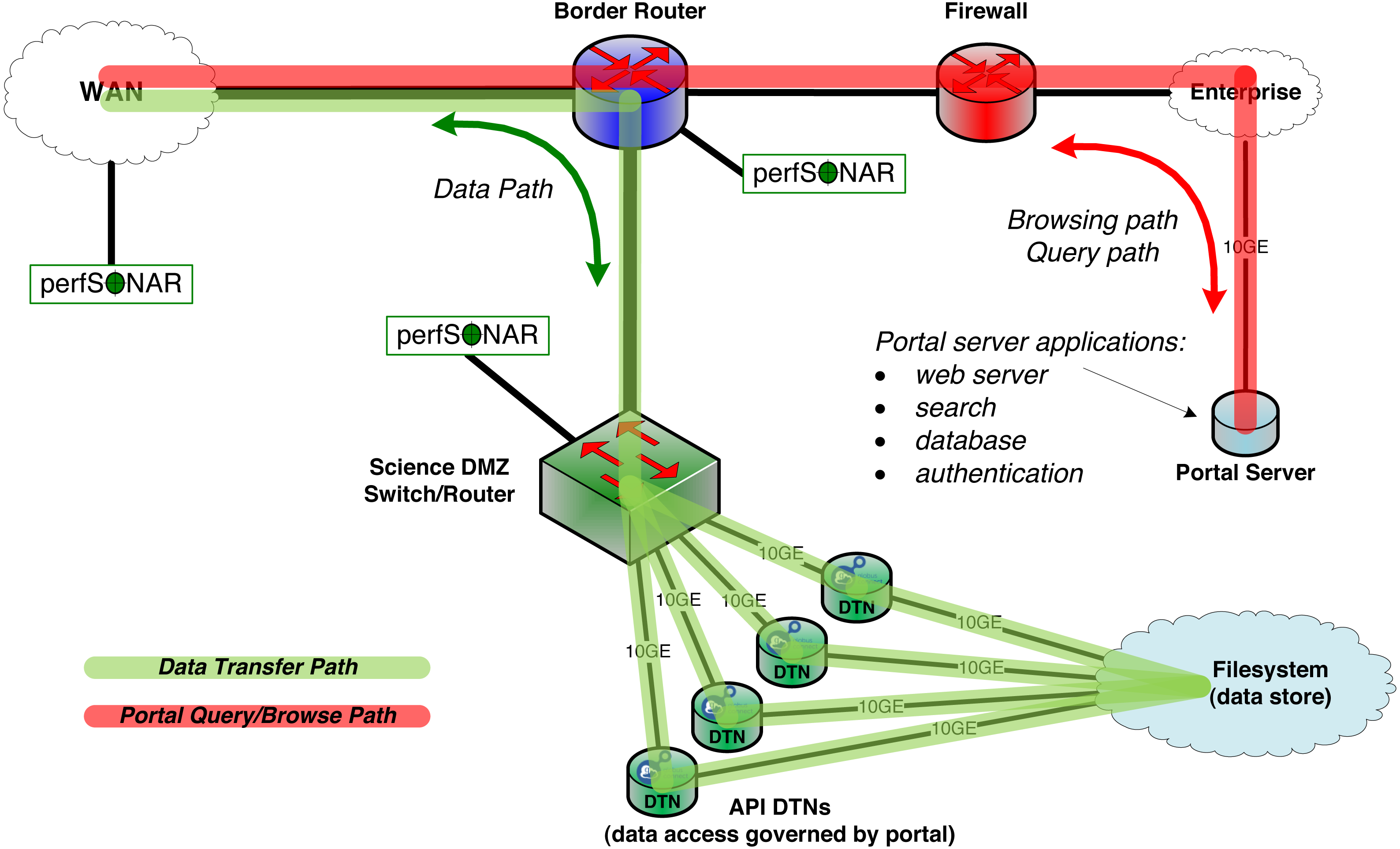Research Data: “Networking, Data Experts Design a Better Portal for Scientific Discovery”
From the Lawrenceerkeley National Lab/DOE:
These days, it’s easy to overlook the fact that the World Wide Web was created nearly 30 years ago primarily to help researchers access and share scientific data. Over the years, the web has evolved into a tool that helps us eat, shop, travel, watch movies and even monitor our homes.
Meanwhile, scientific instruments have become much more powerful, generating massive datasets, and international collaborations have proliferated. In this new era, the web has become an essential part of the scientific process, but the most common method of sharing research data remains firmly attached to the earliest days of the web. This can be a huge impediment to scientific discovery.
That’s why a team of networking experts from the Department of Energy’s Energy Sciences Network (ESnet), with the Globus team from the University of Chicago and Argonne National Laboratory, has designed a new approach that makes data sharing faster, more reliable and more secure.
In an article published Jan. 15 in Peer J Comp Sci, the team describes their “The Modern Research Data Portal: a Design Pattern for Networked, Data-Intensive Science.”
“Both the size of datasets and the quantity of data objects has exploded, but the typical design of a data portal hasn’t really changed,” said co-author Eli Dart, a network engineer with the Department of Energy’s Energy Sciences Network, or ESnet. “Our new design preserves that ease of use, but easily scales up to handle the huge amounts of data associated with today’s science.”
Data portals, sometimes called science gateways, are web-based interfaces for access data storage and computing systems, allowing authorized users to access data and perform shared computations. As science becomes increasingly data-driven and collaborative, data portals are advancing research in materials, physics, astrophysics, cosmology, climate science and other fields.
[Clip]
The new portal design is built on two approaches developed to simplify and speed up transfers of large datasets.
- The Science DMZ, which Dart developed, is a high-performance network design that connects large-scale data servers directly to high-speed networks and is increasingly used by research institutions to better manage data transfers.
- Globus is a cloud-based service to which developers of data portals and other science services can outsource responsibility for complex tasks like authentication, authorization, data movement, and data sharing. Globus can be used, in particular, to drive data transfers into and out of Science DMZs.
Read the Complete Article
Filed under: Data Files, News, Patrons and Users
About Gary Price
Gary Price (gprice@gmail.com) is a librarian, writer, consultant, and frequent conference speaker based in the Washington D.C. metro area. He earned his MLIS degree from Wayne State University in Detroit. Price has won several awards including the SLA Innovations in Technology Award and Alumnus of the Year from the Wayne St. University Library and Information Science Program. From 2006-2009 he was Director of Online Information Services at Ask.com.



